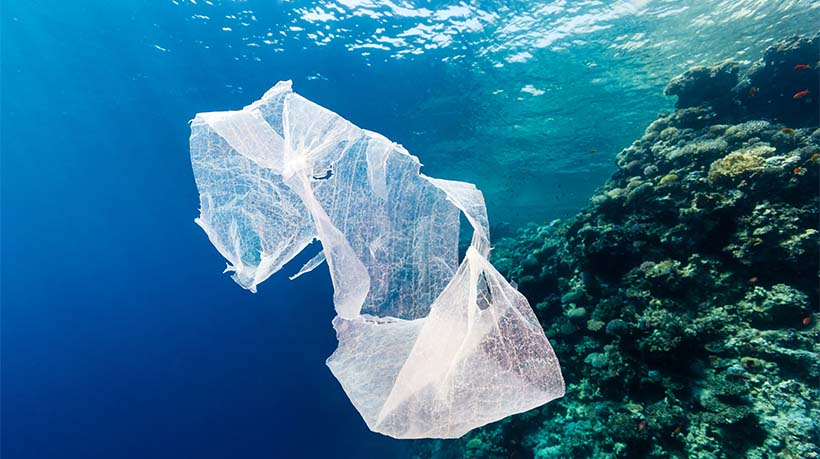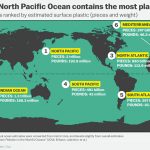How Much Plastic Is Really In Our Oceans?

How Much of a Plastic Mess Is In Our Oceans?
I came across an interesting article last week and that really answers the question of how much plastic is in our oceans. We hear all of the time about plastic oceans, plastic pollution and garbage patches, but what does this really mean? Well, the folks at Vox decided to break things down and quantify how much plastic is really in our oceans and here is the breakdown.
5.25 Trillion Pieces of Plastic are In the Oceans
This number sounds sort of crazy because it is such a large number. It can be hard to really grasp just how large of a number 5.25 trillion is, and what 5.25 trillion pieces of plastic looks like. For reference, this is enough plastic to circle the Earth 425 times.
Oceanographer Marcus Eriksen spent years patrolling the seas, hauling plastic and doing visual assessments to try to answer this question, and he can tell you exactly what 5.25 trillion pieces of plastic looks like. From flip flops to fishing nets and pieces so tiny you can’t even tell what they once were, Eriksen has seen it all.
Where Does It All Come From?
If you are wondering where all of this plastic trash comes from, the short answer is everywhere. From discarded litter on-shore like single-use plastic shopping bags that ends up in waterways and is carried into the oceans, to marine garbage, including trash like lost or abandoned gear from the fishing industry plastic comes from all over.
For the purpose of tracking the plastic trash, Eriksen categorized the plastic he saw by size. There are large macroplastics, smaller mesoplastics, large microplastics and finally small microplastics. Given enough time and the right conditions, all of the plastic will eventually be broken down into small microplastics.
yWhen large pieces of plastic are constantly bombarded with waves and tossed around, while also being degraded by the sun they will break apart into smaller and smaller pieces. Eventually, these small pieces 0.33 – 1.00 mm. These tiny pieces make cleanup even more of a challenge and are basically a nightmare.
The Long Term Impact of our Plastic Oceans
Plastic litter can pose some serious risks. Plastic can essentially strangle plant life by
blocking exposure to sunlight. Marine animals can become tangled in plastic, and this can prohibit them from being able to provide for or defend themselves.
These scenarios can throw ecosystems out of sorts and interferes with the natural order of things. There have also been documented instances animals unintentionally consuming the really small microplastics. Over time the chemicals from these plastics are absorbed into the flesh of the animal.
When predators eat these fish the plastic and chemicals are transferred on to them. The long term health impacts of this on the initial animal to eat the plastic and the animals further up the food chain are unknown at this time.
How Do We Keep Plastic Out of the Oceans?
Cleaning up the plastic in the ocean is a big and exceedingly important job. One of the best things businesses and consumers can do to help, is to try to limit the problem going forward.
We are dumping plastic trash like single-use plastic bags into the oceans at an alarming rate. If we stop now, we’ll still have a huge problem on our hands, but we’ll only have 5.25 trillion pieces to pick up, instead of 5.25 trillion plus however much more would have been added in the coming weeks, months and years.
To combat the plastic oceans problem, a lot of cities and municipalities are looking into banning disposable plastic bags. These thin film bags are seldom recycled and many times, as I am sure you have seen them flying through the air, end up as litter.
When they find their way into the ocean and carried by currents, they very easily break down into smaller and smaller pieces of plastic. These tiny plastic particles are almost impossible to cleanup and can be a major health risk to the oceans and marine ecosystems.
Going reusable and reducing the use of single-use plastic bags is an issue near and dear to our hearts, and we track the bag ban movement on this map. The purpose of this map is to represent the movement and show where bag bans and bag fees are working, as well as where bans and fees are not working.
to represent the movement and show where bag bans and bag fees are working, as well as where bans and fees are not working.
The success stories can be inspirational, and even the not so successful stories carry lessons. The map clearly identifies areas where bag bans are very popular, but the map also shows that the bag ban movement is really a global affair.
Please take some time to check out the worldwide bag ban map, learn about the movement and look for ways you can reduce your plastic consumption. If you know of any locations missing from our map we would love to hear from you.
Retailers, Brands ,Businesses and Non-Profits Can Make a Difference
The necessity to reduce our plastic consumption and the popularity of bag bans creates a perfect opportunity for your brand to market effectively while helping the planet. Your organization can join with us and can make an impact by marketing with reusable shopping bags.
Reusable shopping bags are green partly because they reduce the need and use of disposable plastic bags, but also because they are made from sustainable or recycled materials that can be tossed into the recycling bin. Durable fabrics and quality construction in our factory, ensures these bags will be around for several years to come and they will be increasing your brand’s awareness that entire time.
If you want to learn more about how reusable shopping bags can help your company and the planet get in touch! Plastic in our oceans is a global problem and it requires a global solution. Preventing the use of unnecessary plastic items and making sure to responsibly dispose of the plastic you do use can have a major impact.
Tagged





Pingback: The Life Cycle of a Plastic Bag - Infographic
Pingback: Battle of the Bags – Wandering With Brittany